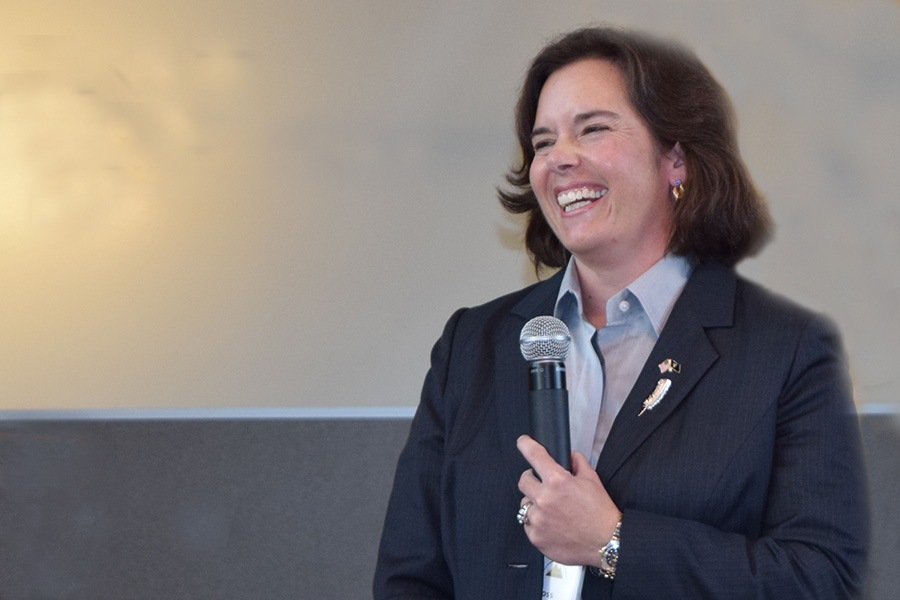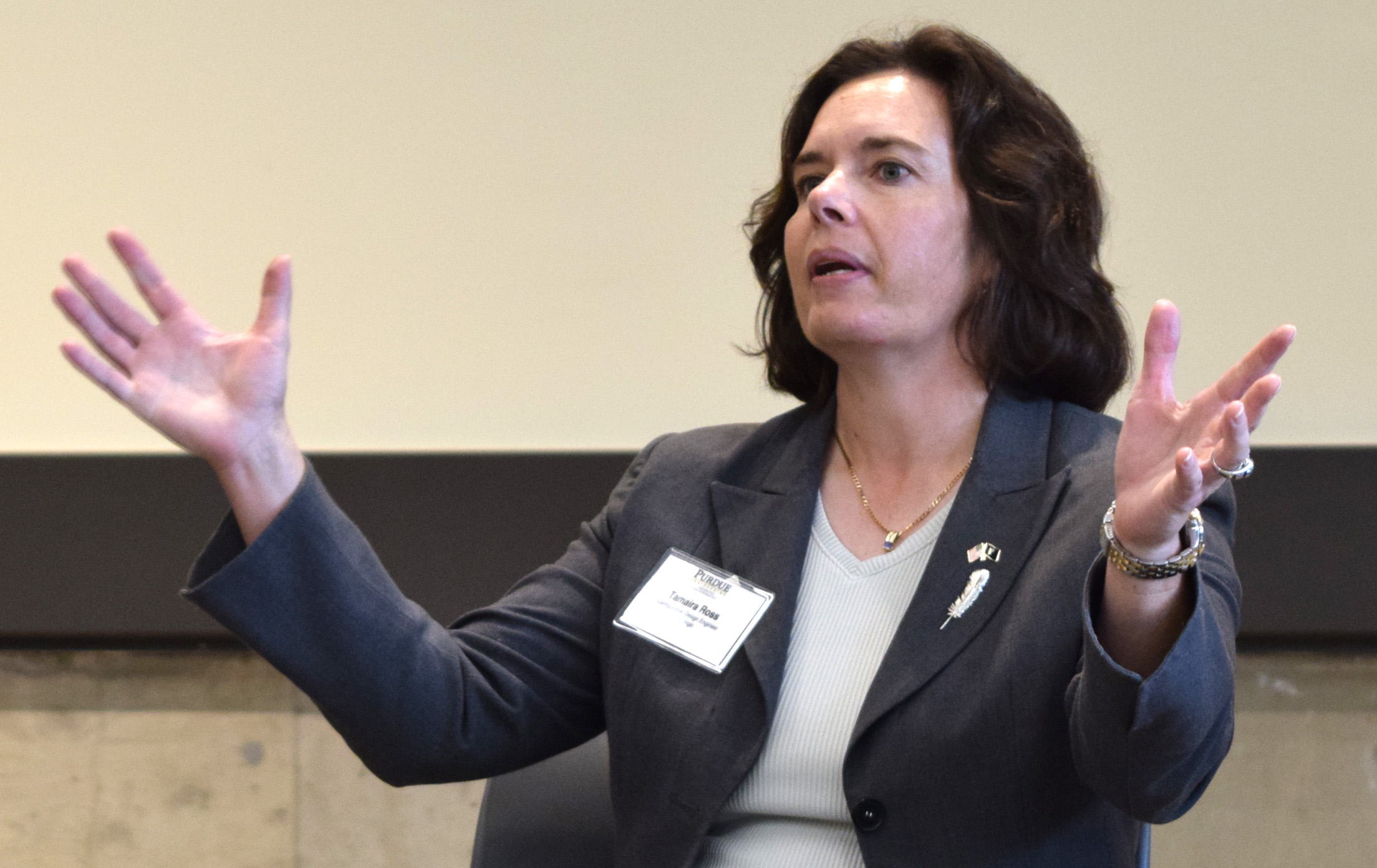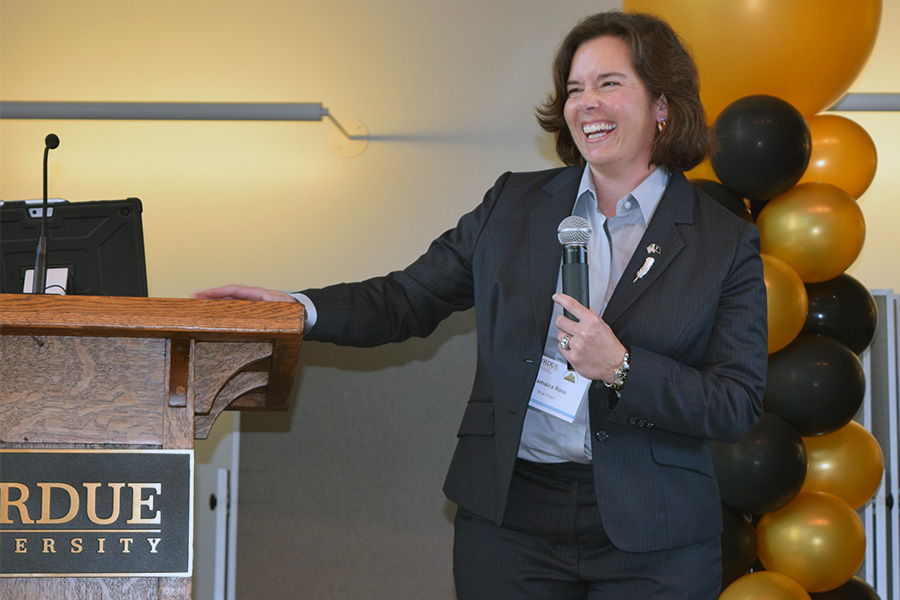From building LEGO spaceships to real ones, AAE alumna Ross taking giant leaps in industry
Tamaira Ross admits to the cliché.
But the picture frame was too perfect not to display prominently on the desk in her office inside Blue Origin’s Kent, Wash., facility. It says, “Shoot for the Moon. At least, you’ll end up amongst the stars.”
As a kid, Ross was captivated by space travel. She spent countless hours researching the solar system. She read about how spacecraft and airplanes worked. She dreamed of becoming an astronaut. Every LEGO set she owned eventually turned into spaceships at some point, rather than what the kit actually was designed for.
“I’ve always been fascinated by aeronautics and astronautics,” Ross says. “This was the only thing I actually wanted to do.”
The word “can’t” was outlawed in her house growing up, Ross says. The environment was one that fostered dreams, even for a girl with aerospace engineering hopes in a field that was — and still is — predominantly men.
But Ross didn’t only aspire. She applied herself.
She applied to and enrolled in Purdue University, settling in with the School of Aeronautics and Astronautics. She literally applied to NASA to become an astronaut. She applied herself professionally to ultimately establish and build an accomplished career in industry, currently as principal manager and configuration design engineer working on Blue Origin’s New Glenn orbital launch vehicle program.

“Purdue gave me a great foundation. I know I’m not the first to say that. I really do believe it,” Ross says. “I’ve gone and done a lot of different things in my career and worked on a lot of different programs and vehicles. Purdue taught me how to learn, I think, was the biggest thing I got out of my Purdue education. Taught me how to solve problems that aren’t in a book. Ironically, we spend a lot of time here in books and that’s great, and I really learned the fundamentals, but what it really taught me was how to teach myself and how to learn as I went throughout my career.”
That ability proved to be critical in Ross’s career journey, which has included working across airplanes, satellites, military aircraft, and, currently in her at Blue Origin, launch vehicles.
“There have been a couple times in my career I’ve taken a bit of a leap of faith,” she says. “I never thought I’d be working on all these different things, by any means.”
When she earned her master’s from Purdue in 1998 — after receiving her bachelor’s in 1996 — she was hired at Boeing. It was a natural fit: Her master’s work under AAE Professor Bill Crossley was done in conjunction with Boeing and she’d spent three summer internships with them prior to going to work full time.
Her initial work focused on commercial airplanes, but after nearly three years, she transitioned to Boeing Defense, Space and Security where she worked on preliminary vehicle design and rapid development of aircraft and spacecraft, including Boeing’s Phantom Phoenix small satellite program and related efforts. She had a variety of projects but also took on several side projects with different technical fellows throughout the company.
An opportunity to work at Blue Origin, a commercial launch company dedicated to opening human access to space, pulled Ross away from Boeing in 2015.
With New Glenn, she’s not only working on the launch vehicle — designed to put satellites, payloads, and, eventually, humans into Earth orbit and beyond — but also the system, including the launch pad and landing platform.

A configurator’s job is to make a system that works, Ross says, not a payload that works or a piece of the vehicle that works or just a piece of the system that works. It’s a whole project that works. Ross enjoys that challenge, even if that means her job over the years has been as an arbiter of decisions.
As part of the System Architecture team, Ross had to consider how to make the launch pad so it works with different launch vehicle designs, how the ship meets weather availability requirements, and how to design the system for many types of payloads, among a bevy of other things.
She’s been able to communicate well throughout the project, for one, because she learned throughout her career how to speak different technical languages.
Satellites and launch vehicles are “basically robots,” she says, so electrical and software engineering expertise are needed to operate the systems autonomously. Launch vehicles have hydraulic systems, unlike satellites, so she has worked with mechanical engineers and has learned more about hydraulics in the last two years than she ever thought she would, she says. Planning the launch pad for New Glenn has produced plenty of interaction with civil engineers as well.
“My focus has always been on fundamentals,” she says. “If I put this input into a system, what’s going to come out of it? If I can understand the fundamental equations or fundamental relationships, I can probably understand how that system works. At least at a level that enables me to make good decisions with my team for the project.”
For her career accomplishments, Ross was honored as an Outstanding Aerospace Engineer in 2014. She’s also on AAE’s Industrial Advisory Council and was a keynote speaker at the inaugural Amelia Earhart Aerospace Summit in the fall.

Her passion for her work is evident when she speaks with students, whether it be at an event like the Earhart Summit or when she teaches a graduate class at the University of Washington. It’s evident daily, too, around colleagues and peers.
And it likely won’t fade anytime soon.
“I’ve basically had my dream job for many years,” she says. “I really have been fortunate that I’ve been able to basically go from building LEGO spaceships to building real spaceships. I think that’s a rare opportunity, and I’m extremely grateful to have the set of circumstances and skills that led to that, and my Purdue foundation that led to being able to do that type of work. It can be hard sometimes. It’s hard doing these big projects that involve a lot of people and tough timelines, but in the end, I think it’s worth it. You have to look at the overall scope and breadth of the work you’re doing and realize how important that is to our country and humanity. I think that’s what really drives me.”
The Purdue sesquicentennial
The Purdue University Sesquicentennial Campaign, 150 Years of Giant Leaps, is a yearlong celebration of Purdue, its remarkable people, its unique history and its visionary drive to meet the world’s future challenges. From Homecoming 2018 through Homecoming 2019, the Purdue community will spend the year celebrating its unique legacy, which has included giant leaps across every field of endeavor, and further advancing the mission set forth since its founding as a land-grant university in 1869. With the campaign serving as a springboard for a renewed commitment to growth, innovation and discovery, Purdue’s call is simple: Whatever your pursuit, take Giant Leaps.

